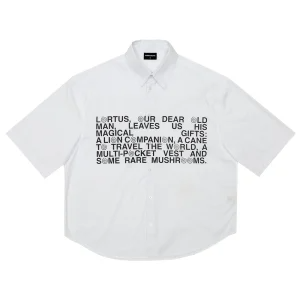
In the world of engagement rings and fine jewelry, lab grown diamond rings are changing the game for budget-conscious shoppers who don’t want to compromise on sparkle. These stunning alternatives to mined diamonds offer the same brilliant shine and durability at a fraction of the cost. If you’re looking for a diamond ring that turns heads without emptying your bank account, lab grown diamonds might be the perfect solution.
Introduction: Why Lab Grown Diamonds Are Gaining Popularity
The jewelry industry is experiencing a significant shift as more consumers choose lab grown diamonds over traditionally mined stones. This growing trend is driven by several key factors:
First, there’s a rising demand for affordable, eco-friendly jewelry options. Modern consumers want beautiful pieces that align with their values and budgets. The impressive growth in this market speaks for itself – the global lab grown diamond market was valued at over $6 billion in 2022 and continues to expand rapidly.
Many jewelry buyers today want high-quality stones that don’t break the bank. They’re asking important questions: Why pay premium prices for mined diamonds when identical lab-created alternatives exist? The line between natural and lab grown diamonds has become increasingly blurred with today’s advanced technology, making the choice easier for value-conscious shoppers.
What Are Lab Grown Diamonds?
How They Are Made
Unlike mined diamonds formed over billions of years deep within the earth, lab grown diamonds are created in controlled environments using sophisticated technology. There are two main methods:
- High Pressure, High Temperature (HPHT): This process mimics the natural conditions under which diamonds form in the earth. Carbon is subjected to extreme pressure and heat until it crystallizes into a diamond.
- Chemical Vapor Deposition (CVD): This newer method involves placing a thin diamond seed in a chamber filled with carbon-rich gas. When heated, the gas releases carbon atoms that build up on the seed, layer by layer, forming a diamond.
Both methods produce genuine diamonds with the same chemical composition, physical structure, and optical properties as mined diamonds. They’re not imitations or simulants – they are authentic diamonds created in weeks rather than billions of years.
Differences from Mined Diamonds
The main differences between lab grown and mined diamonds are:
- Environmental impact: Lab grown diamonds don’t require mining, which can cause significant environmental damage. This makes them a more eco-friendly choice.
- Price: Lab grown diamonds typically cost 30-40% less than comparable mined diamonds, making them much more affordable.
- Origin: The only real difference is where they come from – a laboratory versus a mine. In terms of composition, hardness, and appearance, they are identical.
How Lab Grown Diamonds Look Just as Fancy
Quality and Clarity
Many jewelry experts point out that lab grown diamonds often have fewer flaws than their natural counterparts. Because they’re created in controlled environments, manufacturers can minimize imperfections. This means you can often get a higher clarity grade for the same price you’d pay for a lower-grade mined diamond.
Sparkle and Shine
The brilliance of a diamond – that eye-catching sparkle we all love – depends largely on how well it’s cut. Lab grown diamonds benefit from precision cutting techniques that maximize their light performance. When properly cut, they capture and reflect light just as beautifully as any high-end natural diamond, creating that sought-after fire and brilliance.
Real-Life Examples
Consider this real-world comparison: a 1-carat lab-grown diamond ring with excellent cut, color, and clarity might be priced around $2,500. The same specifications in a natural diamond would likely cost $5,000 or more. Yet when worn side by side, even trained jewelers would need special equipment to tell them apart.
Cost Savings and How to Find Affordable Options
Price Comparison
The price difference between natural and lab grown diamonds is significant:
- Natural diamonds typically range from $4,000 to $10,000+ for popular engagement ring sizes
- Comparable lab-created diamonds range from $1,500 to $5,000 for similar stones
This price gap allows many couples to choose larger stones or higher quality diamonds while staying within their budget.
Best Places to Shop
When shopping for lab grown diamond rings, consider these reputable sources:
- Online retailers with strong reviews and return policies, such as James Allen and Brilliant Earth
- Local jewelers who offer lab grown options
- Look for certification from respected organizations like GIA (Gemological Institute of America) or IGI (International Gemological Institute)
Tips for Buyers
To maximize your savings while getting a stunning ring:
- Compare the “4Cs”: cut, clarity, color, and carat weight across different retailers
- Consider choosing slightly lower color grades (G-H instead of D-F) for significant savings with minimal visual difference
- Focus on excellent cut quality, as this factor most affects a diamond’s sparkle and appearance
Are Lab Grown Diamonds Worth It?
Pros
- Much more affordable without sacrificing quality or appearance
- Environmentally friendly and ethically sourced without mining concerns
- Wide selection with many customizable design options
- Chemically identical to mined diamonds
Cons
- Some buyers still prefer the natural rarity and traditional value of mined diamonds
- Resale value is typically lower than natural diamonds
- Not universally accepted in all markets as traditional diamonds
Expert Insights
Many professional jewelers now recommend lab grown diamonds as a smart choice for everyday wear. The quality has improved so dramatically that several celebrities publicly wear and endorse lab grown diamond jewelry. This mainstream acceptance continues to grow as awareness increases.
Future Trends and What Buyers Should Know
The lab grown diamond market continues to evolve rapidly:
- More established jewelry brands are offering lab-grown options
- Technology improvements are constantly enhancing quality
- Certification has become increasingly important for verifying quality
- The price gap between natural and lab grown diamonds is expected to remain significant
When shopping for lab grown diamond rings, look for proper certification, ask about the growing method used, and compare warranties and return policies between retailers.
Conclusion: Find the Sparkle You Want for Less
Lab grown diamond rings offer an exciting opportunity to own beautiful, high-quality diamond jewelry at a fraction of traditional costs. These gems look just as expensive and dazzling as their natural counterparts but come with significant savings.
Whether you’re shopping for an engagement ring, anniversary gift, or special occasion jewelry, lab grown diamonds let you prioritize size, quality, or design elements that might otherwise be out of reach.
By understanding what makes these modern marvels special, you can make an informed decision based on your values, preferences, and budget. With some research and expert guidance, you can find a beautiful, affordable lab grown diamond ring that will sparkle brilliantly for a lifetime.






